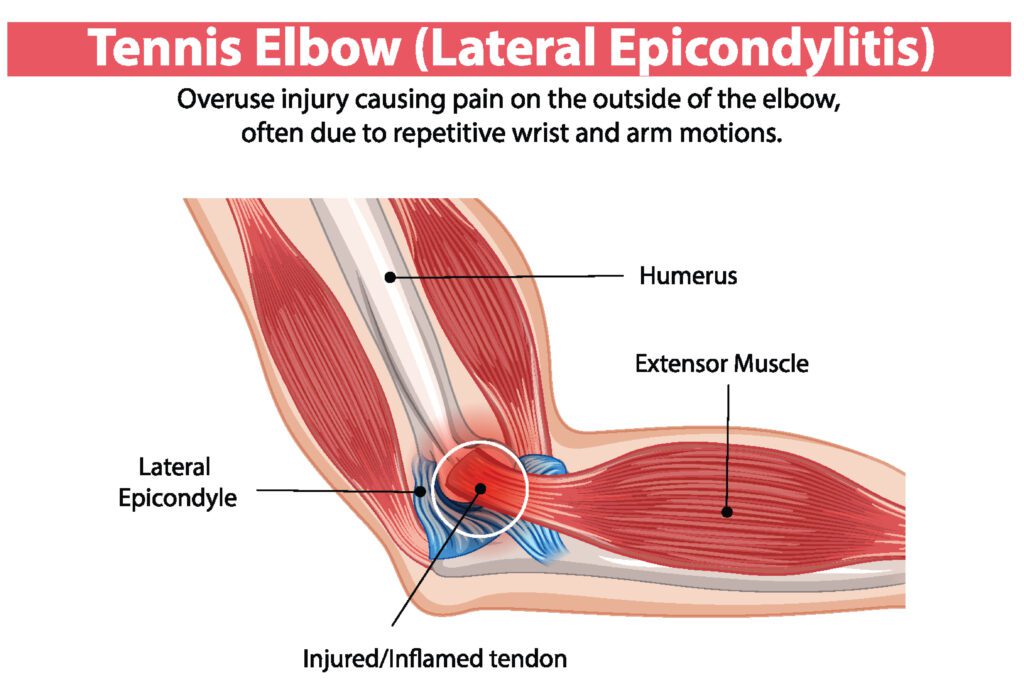What is it?
Tennis elbow is an overuse injury that causes pain on the outside of the elbow. It happens when the tendons that attach to the lateral epicondyle (a bony bump on the outside of your elbow) become damaged or inflamed, usually from repetitive stress.

Who is at risk?
Anyone who performs repetitive wrist and arm movements, especially those involving gripping, twisting, or lifting
What are some common symptoms?
- Pain and tenderness on the outside of the elbow
- Weak grip strength
- Pain that worsens with activities like:
- Shaking hands
- Lifting objects
- Turning a doorknob or opening a jar
Causes?
Repetitive motions of the wrist and forearm, such as:
- Tennis or racket sports
- Typing or using a mouse
- Painting, plumbing, carpentry, or repetitive lifting
Despite the name, most cases are not from tennis!
How is it diagnosed?
- Usually by physical exam and medical history
- Imaging (like MRI or ultrasound) is rarely needed but may be used to rule out other conditions
How long will recovery take?
Most people recover in 6–12 weeks with conservative treatment, but full recovery can sometimes take up to 6–12 months, depending on the severity.

Can it go away on its own?
Most of the time tennis elbow will go away on its own, provided that you do not continue overloading the tendons. However, it is important that you see a health professional if symptoms persist to prevent it from developing into a chronic issue.
What does treatment look like?
- Rest and education around activity modifications to avoid triggers
- Ice packs and over-the-counter pain relievers (e.g., ibuprofen)
- Physiotherapy: stretching, eccentric strengthening
- Forearm strap/braces
How can I prevent this?
- Strengthen forearm muscles
- Use proper technique in sports or work
- Take regular breaks from repetitive tasks
- Use ergonomically designed tools
- Warm up before activities and stretch afterward